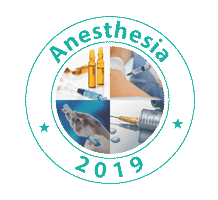Nikola Bradic
University Hospital Dubrava, Croatia University North, Croatia
Title: Management of primary graft dysfunction after heart transplantation
Biography
Biography: Nikola Bradic
Abstract
Introduction: Approximately, 4-15% heart transplants, recipients do not survive in initial months after transplantation. The leading cause of early mortality after HTx is primary graft dysfunction (PGD) in which pathophysiology remains unknown. Between years 2013 and 2015, we had 41 heart transplantations in our institution and three of them developed signs of PGD. All of them we treated with VA ECMO combined with levosimendan in continuous infusion in early phases.
Cases: First patient, 53 years old male, with previous valve replacement and CABG surgery, became hemodynamically unstable soon after HTx in ICU despite of inotropic and vasoactive medical support. Emergency Transesophageal echocardiography (TEE) has shown dilated right atrium and akinetic right ventricle. Extracorporeal membrane oxygenation (ECMO) established immediately supported with continuous levosimendan infusion of 0.1 mcg/kg/ min. After 24 hours, levosimendan discontinued and ECMO continued for the next 5 days. In that period, TEE has shown improvement of right and left heart function and decrease of heart dimensions. Fifth day, ECMO discontinued, and several days later patient transferred on ward. Second patient, 39 years old male could not be weaned from CPB and ECMO with levosimendan started in operating room (OR). He stabilized hemodynamically, but his postoperative course was complicated with surgical bleeding and subsequent multiple revisions. Patient received levosimendan (0.1 mcg/kg/min) for 32 hours and was on ECMO for 72 hours. TEE on the postoperative day 5 showed left ventricle with normal diastolic diameter with systolic collapse and akinetic right ventricle (EFRV 15%). Despite all measures, the patient did not survive. Third patient, 47 year old male could not be weaned from CPB. TEE has shown significant dilatation of both ventricles with global hypocontractility. ECMO and levosimendan (0.1 mcg/ kg/min) were established; levosimendan was discontinued after 24 hours and ECMO discontinued on day 3 after HTx. In this period, TEE has shown improvement of contractility with EFLV 60%. At day 6 after ECMO removal, patient was discharged to the ward.
Conclusion: In case of PGD after HTx, combination of emergency ECMO and levosimendan has shown positive effect on hemodynamic parameters and recovery of heart function. Encouraging number of survival patients could be explained with small number of patients, and possibly would reach the data from other world centers, as we will inevitably have more patients with PGD complications. According to the suggestions of ISHLT consensus, usage of ECMO reduces the amount and dose of other inotropic and vasoactive drugs and improves the overall outcome. Results of other centers, suggest usage of ECMO over the other mechanical devices for heart support in PGD. Combination of ECMO with levosimendan within first 24 hours after HTx with PGD may shorten the time of ECMO and improve survival, and therefore could become standard treatment for PGD after transplantation in the future.

